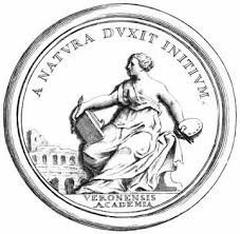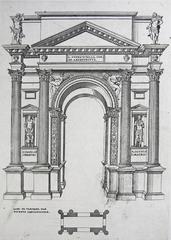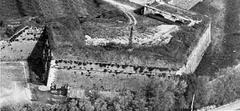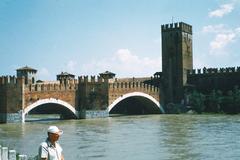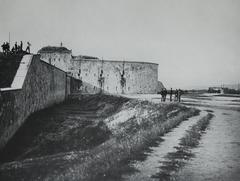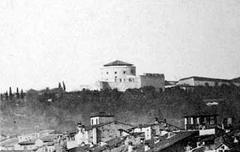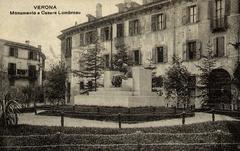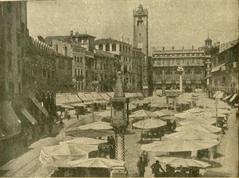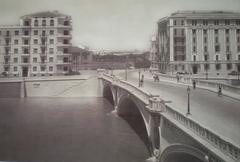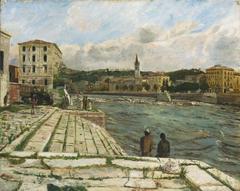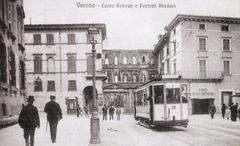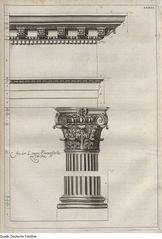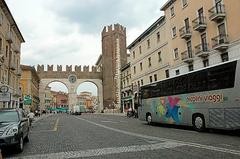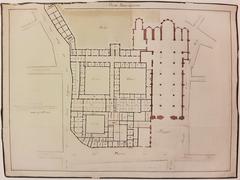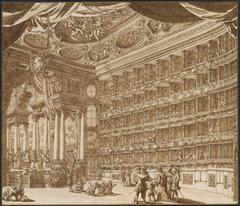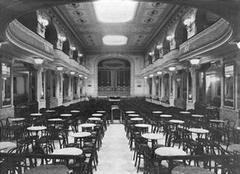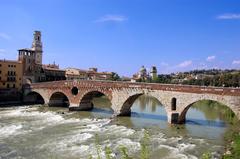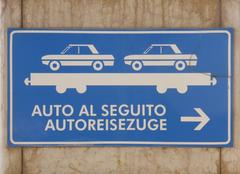Visiting Seminario in Verona, Italy: Tickets, Hours, and Travel Tips
Date: 04/07/2025
Introduction to Seminario Verona Historical Site
Nestled in the heart of Verona, Italy, the Seminario Maggiore di Verona is a cornerstone of religious, architectural, and cultural heritage. Established in the aftermath of the Council of Trent during the mid-16th century, its primary mission was to educate clergy in theology, philosophy, and classical languages as a response to the Protestant Reformation (Wikipedia). Over the centuries, the complex has evolved to showcase a blend of Renaissance and Baroque styles, contributing significantly to Verona’s spiritual and educational landscape (Chiesa di Verona).
A visit to the Seminario Maggiore reveals not only its deep historical roots but also its cultural treasures, such as an ancient library filled with medieval manuscripts and art by luminaries like Titian and Tintoretto (Facts.net). Its strategic setting between the Adige River and the Torricelle hills provides stunning views, making it a favorite among history lovers, pilgrims, and cultural travelers.
In the context of the upcoming 2025 Jubilee Year, the Seminario’s role as a spiritual hub is further amplified, offering special liturgies, guided tours, and community events (SchengenVisaInfo). This guide presents vital information for your visit, including hours, ticketing, accessibility, and insider tips. It also explores the Seminario Minore’s role in vocational training and the broader religious landscape of Verona.
Whether you are drawn by architectural marvels, spiritual offerings, or artistic masterpieces, this guide ensures you are well-prepared to make the most of your visit to one of Verona’s most cherished landmarks (Diocese of Verona).
Table of Contents
- Foundation and Early Development
- Architectural Evolution and Artistic Heritage
- Educational Mission and Clerical Training
- Seminario Minore and Vocational Pathways
- Visiting Information: Hours, Tickets, Accessibility
- Travel Tips and Photo Opportunities
- The Seminario’s Role in the Community
- Nearby Attractions and How to Visit
- Major Events and Festivals in Verona
- Modern Life and Urban Culture
- FAQs
- Conclusion and Visitor Recommendations
- References
Foundation and Early Development
The origins of the Seminario Maggiore di Verona can be traced to the Council of Trent, which decreed in 1563 that seminaries be established across Catholic Europe to ensure a well-educated clergy (Wikipedia). Bishop Agostino Valier responded by founding the Verona seminary in 1567. Initially, the institution moved between various sites, including the convents of Sant’Antonio della Giara, the Umiliati di San Bartolomeo, and briefly, San Gabriele Arcangelo.
Architectural Evolution and Artistic Heritage
The current seat of the Seminario Maggiore, established in 1695, is situated near Piazza Isolo, between the Adige River and the Torricelle hills. The building, completed in the early 19th century, harmonizes Renaissance and Baroque elements and has been carefully restored following damage during World War II (Chiesa di Verona).
Among its treasures are a historic library with rare medieval manuscripts and the Cappella della Trasfigurazione, a masterpiece of ecclesiastical art. The seminary also boasts works by renowned artists such as Titian and Tintoretto, making it a custodian of Verona’s cultural patrimony (Facts.net).
Educational Mission and Clerical Training
From its inception, the Seminario Maggiore has focused on the formation of future priests, emphasizing theology, philosophy, and classical languages. Its rigorous academic program prepares clergy for service in the Diocese of Verona and beyond. The faculty includes distinguished theologians and scholars, and its alumni have made significant contributions to both ecclesiastical and academic spheres (Facts.net).
Seminario Minore and Vocational Pathways
Complementing the Maggiore, the Seminario Minore was founded in 1935 to provide early vocational guidance for younger students. Located at Lungadige Attiraglio 45, the Minore continues to nurture religious vocations and offers a strong educational foundation for boys and adolescents considering the priesthood (Chiesa di Verona).
Visiting Information: Hours, Tickets, Accessibility
Location:
- Seminario Maggiore: Via Seminario 8, 37129 Verona
- Seminario Minore: Lungadige Attiraglio 45, 37124 Verona
Visiting Hours:
- Seminario Maggiore: Tuesday to Sunday, 9:00 AM to 6:00 PM; closed Mondays and public holidays (hours may vary during special events—confirm via official website).
Tickets & Admission:
- Entry is generally free; donations are welcome for preservation efforts.
- Guided tours are available by appointment and may require a small fee. Booking in advance is advised, particularly during peak seasons.
Accessibility:
- The complex is wheelchair accessible, with ramps and elevators. Visitors with special needs should contact the seminary in advance for tailored accommodations.
Travel Tips and Photo Opportunities
The Seminario’s location offers excellent photo spots, especially at the Cappella della Trasfigurazione and the gardens overlooking the Adige River and Torricelle hills. For the best light, visit in the early morning or late afternoon.
The Seminario’s Role in the Community
Beyond clerical training, the Seminario serves as a hub for spiritual, cultural, and educational events. It hosts conferences, exhibitions, and the publication of “Il Seminario,” fostering dialogue between the Church and broader society (Chiesa di Verona).
Nearby Attractions and How to Visit
The Seminario is centrally located and easily accessible by foot or public transport. Nearby, you’ll find:
- Verona Arena: A Roman amphitheater famous for its opera festival (visitverona.it).
- Basilica of San Zeno: A Romanesque masterpiece.
- Cathedral of Santa Maria Matricolare: The city’s main cathedral.
During the 2025 Jubilee Year, the Seminario will offer special liturgies and spiritual programs for pilgrims (SchengenVisaInfo).
Major Events and Festivals in Verona
- Arena di Verona Opera Festival: June–September (empireverona.com)
- Vinitaly: April, world’s largest wine and spirits exhibition (veronafiere.it)
- Fieracavalli: November, international horse fair
- Marmomac: September, stone and design fair
- Christmas Markets: December (nationaltraveller.com)
Modern Life and Urban Culture
Verona blends history with modernity through its culinary scene (featuring dishes like risotto all’Amarone), lively nightlife, bustling markets, and sustainable urban mobility initiatives (verona.info).
FAQs
What are the Seminario Maggiore di Verona’s hours?
- Tuesday to Sunday, 9:00 AM to 6:00 PM; closed Mondays and public holidays.
Is there an admission fee?
- Admission is free; donations and guided tour fees may apply.
How do I book a guided tour?
- Contact the seminary by email or phone in advance.
Is the Seminario wheelchair accessible?
- Yes, with ramps and elevators.
How do I get there?
- Walking distance from central Verona; accessible via public transport. Nearest stops: Piazza Bra, Porta Borsari.
What is the dress code?
- Modest clothing covering shoulders and knees is required.
Conclusion and Visitor Recommendations
The Seminario Maggiore di Verona offers a remarkable journey into the city’s religious, cultural, and artistic legacy. From its historic architecture and priceless collections to its central role in the community, a visit here is both enlightening and inspiring. Plan ahead by confirming hours, booking tours, and integrating your visit with other Verona highlights.
For updates and personalized guides, download the Audiala app and follow official channels. Whether your interests are spiritual, historical, or artistic, the Seminario promises a memorable Verona experience.
References and Further Reading
- Wikipedia
- Chiesa di Verona
- Facts.net
- Sacred Wanderings
- Italy Vacation Specialists
- SchengenVisaInfo
- Diocese of Verona
- Along Dusty Roads
- Visit Verona Official Site
- Suite Antico Seminario on Booking.com
- Empire Verona
- Veronafiere
- National Traveller
- Verona.info
